Locke’s Mill Through the Ages
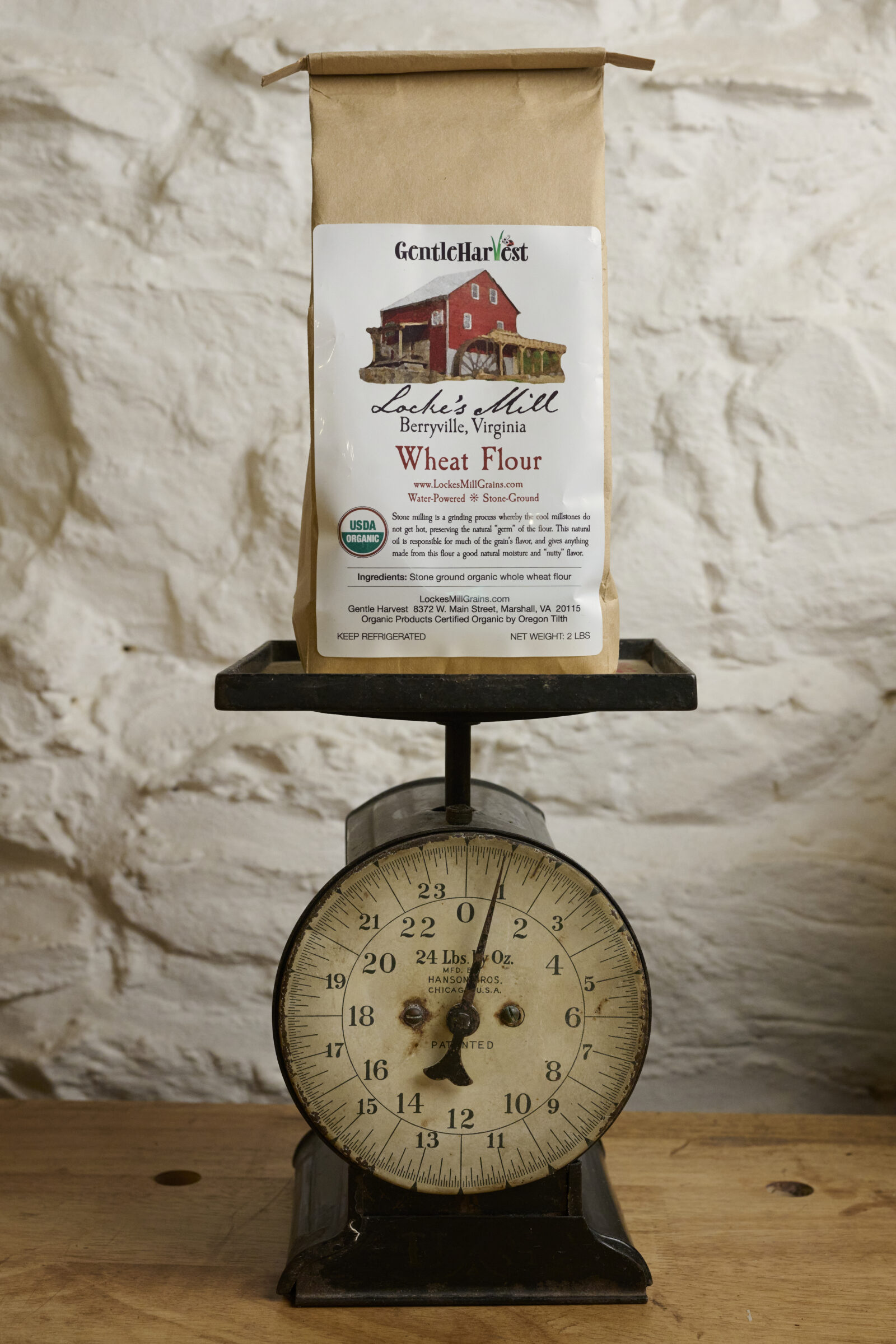
Written by Heidi Baumstark | Photos by Shannon Ayres
Sitting at the top of a hill on a narrow, winding road along the Shenandoah River is Locke’s Mill, a restored gristmill just outside the town of Berryville in Clarke County. The structure dates to 1876, a two-story frame mill built atop a stone foundation. The old French burr stones inside continue to churn.
Considering its role in Virginia’s history, it’s no wonder that Locke’s Mill is listed on both the Virginia Landmarks Register (2018) and the National Register of Historic Places (2019). It is located within the Greenway Rural Historic District among 30 miles of farmland.
Thanks to dedicated restoration efforts, the mill is still churning out stone-ground heritage grains, flours, and baking mixes. In 2016, the mill was purchased by Sandy Lerner, cofounder of tech giant Cisco Systems. And, in 2017, it was certified as organic by the USDA. In addition to the mill, Lerner owns Ayrshire Farm and Hunter’s Head Tavern — both in Upperville — plus Gentle Harvest, a custom processing facility in Winchester.
Producing organic products is central to Lerner’s businesses, including the meats and poultry from Ayrshire Farm. Katie Wais, who handles marketing and events for Lerner’s enterprises, explains, “Organic processes and products are very important to Sandy, and we’ve been big on organic farming before it became trendy. Sandy’s always wanted to own a mill, and when the opportunity came up to purchase Locke’s Mill, she pounced on it.”
The fact that the milling system is certified organic is what makes the mill unique. At Ayrshire, they’re beginning to grow einkorn, a type of ancient wheat that’s popular because of its low gluten content. But for now, the products they grind come from other farms. The stone-ground grains are provided to local distillers, bakers, chefs, visitors to the mill, and are available for purchase online. Plus, the mill welcomes the public during their Open Mill Days, the first and third Saturdays of the month from March through November, so visitors can observe the milling process up close and take home some freshly ground grains.
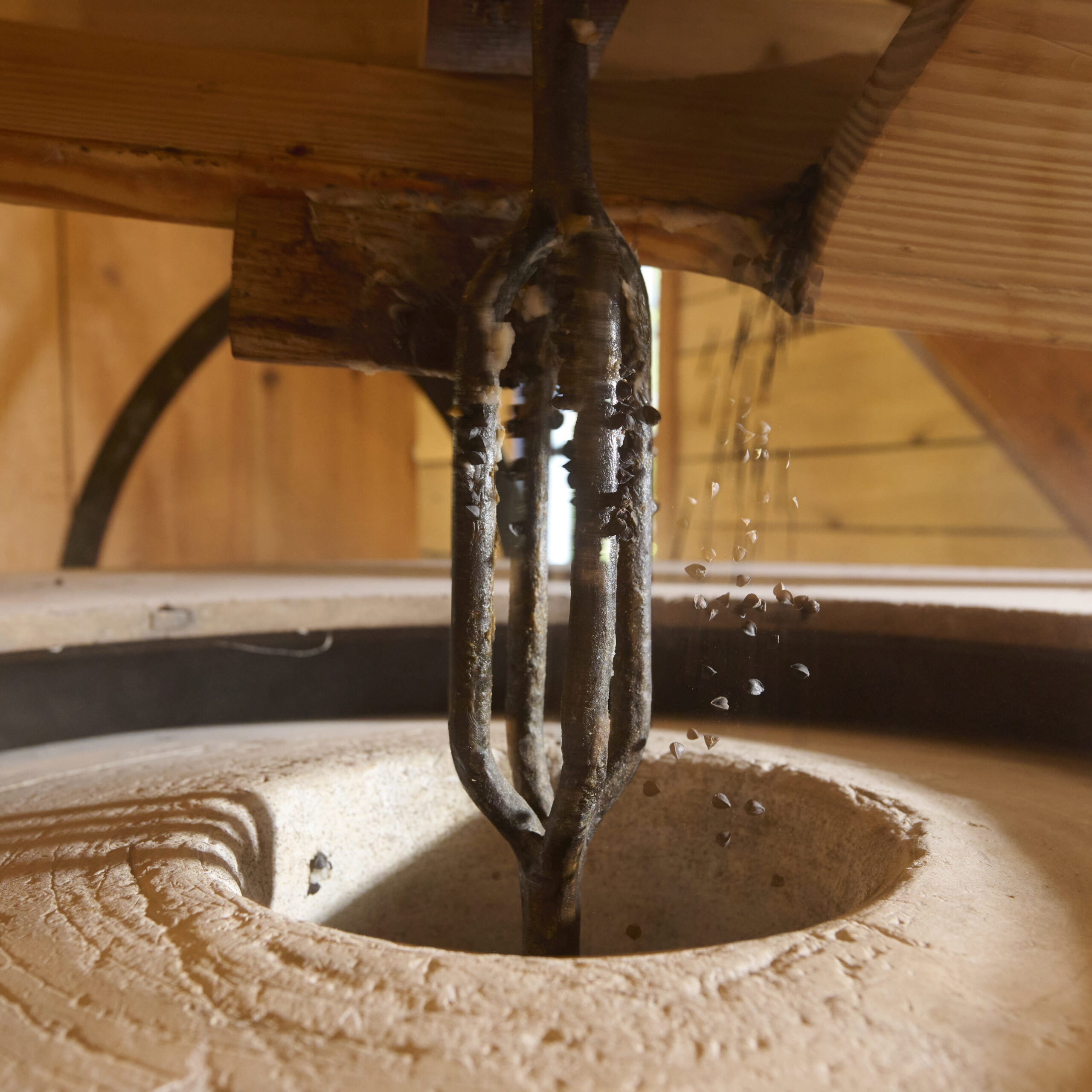
Mill Owners Past to Present:
George Washington Lewis (1757 – 1821)
A report from the Virginia Department of Historic Resources (DHR) reveals earlier names of the mill, which correspond with the names of its owners: Lewis’ Mill, Holker’s Mill, Price’s Mill, and finally, Locke’s Mill.
The story begins with Fielding Lewis, a widower with three children. In 1750, Lewis married Betty Washington, the sister of George Washington. Upon Lewis’ death in 1781, the land was divided between three of his sons. One of them — George Washington Lewis — inherited 1,078 acres, the “surplus … on the Shenandoah River in the lower part of the whole tract,” the DHR report states. George would later take up residence on the property near what was then called Lewis’ Mill.
In February 1790, George sold his acreage, and deed records list his inheritance as including “all houses, buildings, gardens, orchards, ways, waters, water courses, mills, milldams, millstones and the gear and utensils to the said mills…”
John Holker (1836 – 1923)
In 1792, the property was sold to Englishman John Holker, the son of an industrialist. His business partner, Robert Morris, was a financier of the American Revolution and investor in Leeds Manor, the 160,382-acre parcel that encompassed the area around Locke’s Mill. It’s likely through this connection that Holker first found his way from Philadelphia to Virginia.
The fact that an international player such as Holker recognized Locke’s Mill as an appealing investment is testimony to Shenandoah’s lucrative milling economy at the time. Because the mill was so close to the river, frequent flooding caused damage over the years, which resulted in it becoming inoperable — though some mill remnants survive.
Joseph Price (1836 – 1923)
The mill was purchased in 1876 by Joseph and Mary Price, at which point it became known as Price’s Mill. The 1870 census lists Joseph Price, aged 34, as a “dry goods and grocery merchant.” In general, mills were central hubs in rural areas, consolidating dry goods, produce, and mail services. Existing grain elevators in the original structure indicate that during Price’s rebuilding of the mill, he reincorporated the Oliver Evans milling system of continuous production. Before Evans, milling was a labor-intensive process requiring many workers.
Price also imported French burr stones. They were shipped from France to the port of Baltimore and include the “Price” name inscribed on them. The DHR report adds, “Retention of the 1870s burrstones is a major element to the mill’s integrity. … The property has high integrity of feeling as it continues to be a water-powered mill using a historic-age waterwheel, its original burrstones, and custom-built frame and gears that closely replicate the historic milling process. The property’s picturesque setting adds to its integrity of feeling.” The DHR report adds that the current structure was built into a hill further away from the Shenandoah River to provide a buffer to prevent flooding. Instead of river water for its source, an upper spring behind the mill was used. Price operated the mill until 1899.
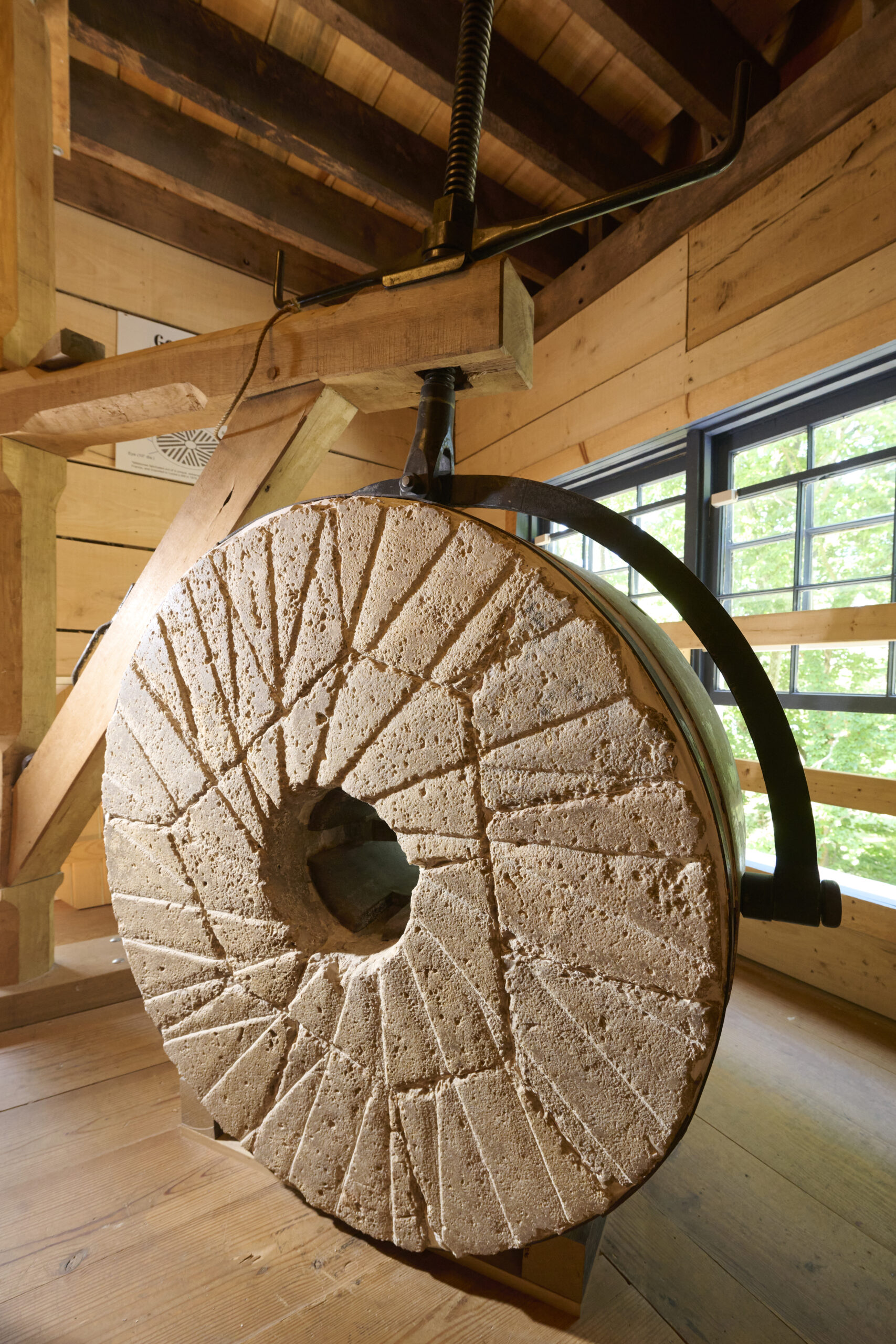
Thomas H. Locke (1864 – 1940)
In 1907, Thomas H. Locke became the owner of the mill with his wife, Rosa V. Locke. The 1920 census lists Locke as a “merchant” in a “grocery store.” The Lockes were a large family from the Shenandoah Valley. Burlap flour bags carried Locke’s name along with the label, “Shenandoah Mills – Berryville Virginia – Fancy Buhr Meal.”
In 1935, a flood damaged the waterwheel, causing the mill to cease operations, though the structure continued to serve as a general store and post office. The property switched hands a number of times over the next several decades.
Jon and Carol Sigler Joyce (1992 – 2016)
In 1992, almost 60 years later, a local couple — Jon and Carol Sigler Joyce — purchased the property and began restorations. Wais adds, “It was their labor of love, a passion project for them. For almost 20 years, they worked on it off and on. Then in 2016, Sandy purchased it and helped finish its restoration, adding a second milling system, and had it certified organic in 2017.”
Water from an upper spring is fed down the shoot, which falls into the outside waterwheel then into another waterwheel inside, and that’s what engages the millstone. Several grain elevators are powered as well. Today, the mill is fully automated, requiring only a single operator.
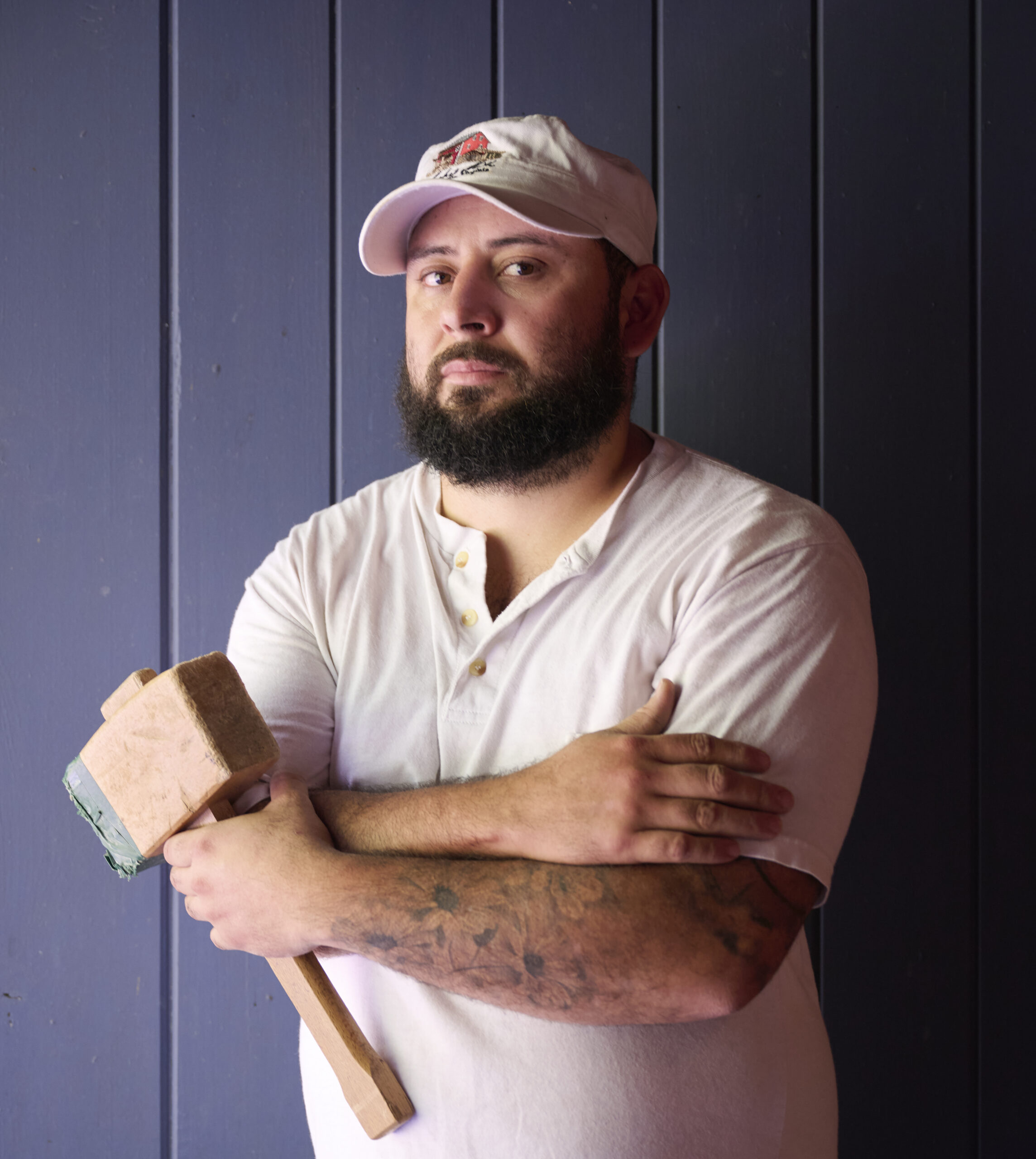
Great Grains
Wais says they often get asked which flour produced at the mill is closest to white all-purpose flour. “Our answer: none of them,” she notes. All-purpose flour has been ground and sifted, but the sifting process removes the outer husk of the grain, the hard, chaffy skin. Then they bleach the flour and add preservatives. “Our flour is stone ground, which changes the integrity; it preserves the natural moisture, and we sift out nothing. This results in a product that’s going to bake up differently,” she explains. The chaff, the outer husk of the kernel, remains and provides lots of flavor and nutrients. Folks with gluten sensitivities say they can eat these products. Wais points out that “during the pandemic, people discovered local bread baking — and have kept up with it.”
Katie Kopsick, founder of Bolivar Bread Bakery in Harpers Ferry, West Virginia, shares, “We love using their grains in our sourdough bread. They add so much texture and heartiness; you can really taste the difference. The cooler temperature of the grinding stones maintains the flavor and micronutrients, which translates to better fermentation and digestibility.”
Adrienne Smirnow, a farm-based chef in Markham, says, “At one of my farm-to-table dinners, I featured Locke’s Mill products throughout the meal. There’s an amazing freshness and richness to these grains I hadn’t experienced before. They produce such high-quality ingredients that it really kicks up your recipes in flavor, texture, and nutrition.”
Bagged grains can be purchased at Hunter’s Head Tavern, and several specialty dishes using Locke’s Mill grains have been added to their menu. Tim Thompson, the chef at Hunter’s Head, chimes in, “I have come to love our mill’s grains. Cooking fresh and eating locally helps grow our American culture through memories shared with family. Our mill’s products have recipes attached that provide opportunities to revitalize our families’ American traditions.”
According to Wais, they just started selling their Ayrshire meats at local farmers markets, including Buchanan Hall Market in Upperville. Soon they’ll begin selling their bagged grains there, too. The Buttery, a restaurant in nearby Millwood, buys Locke’s Mill grits and serves them on their menu. Locke’s Mill also provides grains to Catoctin Creek Distilling in Purcellville.
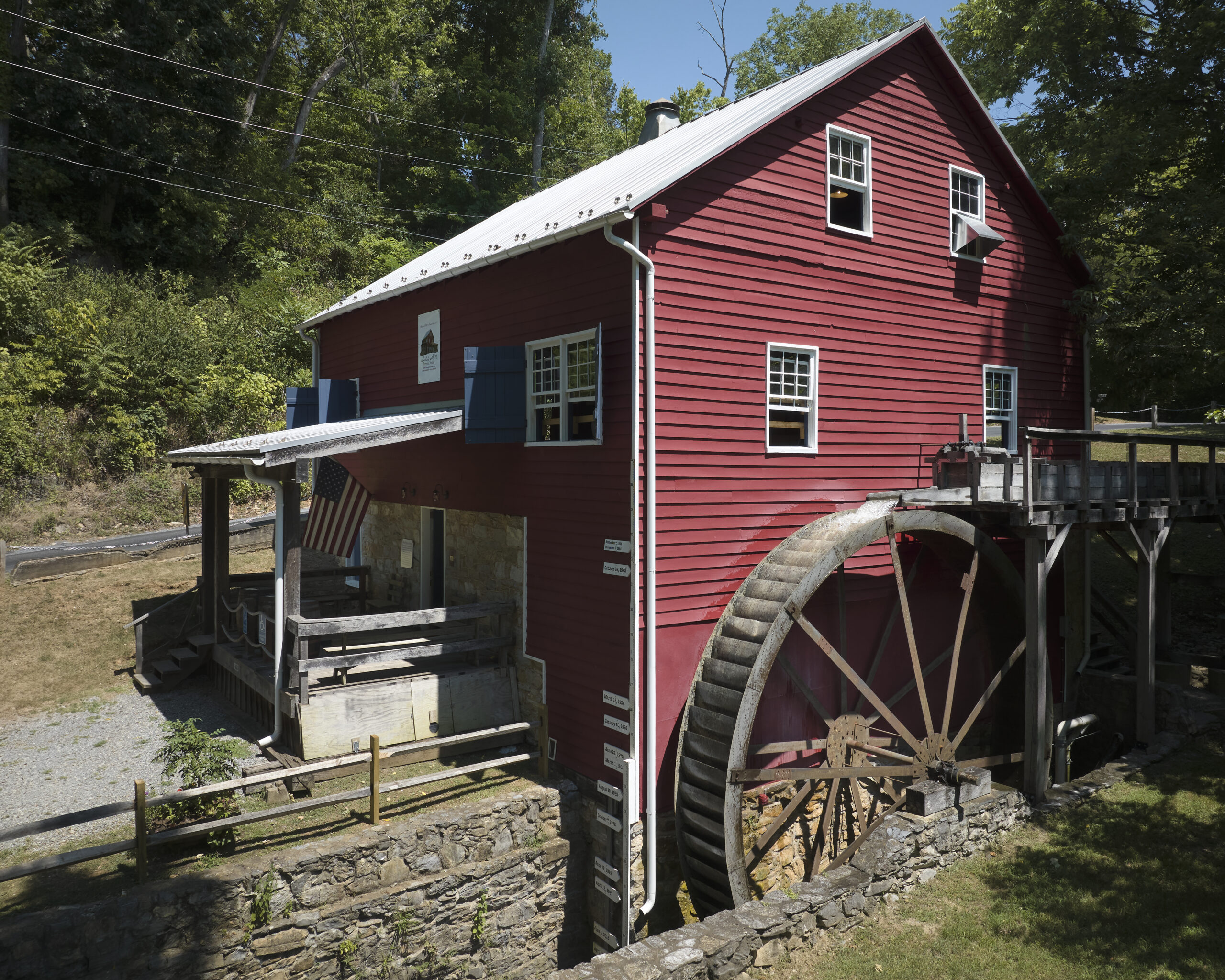
Since 2014, Nathan Stalvey has been the director of Clarke County Historical Association, the organization which owns nearby Burwell-Morgan Mill in Millwood. He added, “During the early 19th century, there were over 50 mills in what is now Frederick and Clarke counties. As the nation’s breadbasket moved to the Midwest, local mills became obsolete. Thanks to preservation efforts, both of these mills [Burwell-Morgan Mill and Locke’s Mill] are again operational, and they are a testament to the importance Clarke County has played in the history of the Shenandoah Valley.”
Wais adds, “When other similar mills ceased operations, hard work and dedication have kept the mill running.” ML
Locke’s Mill is located at 1600 Locke’s Mill Road in Berryville. Visitors can observe the milling process March through November on the first and third Saturdays of the month from 11 a.m. until 4 p.m.; admission is free. For online ordering of stone-ground grains and to learn more, visit lockesmillgrains.com.
Published in the August 2024 issue of Middleburg Life.








